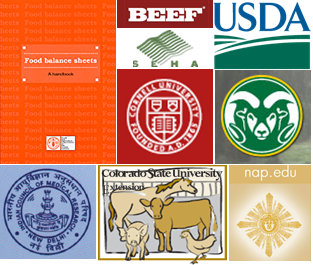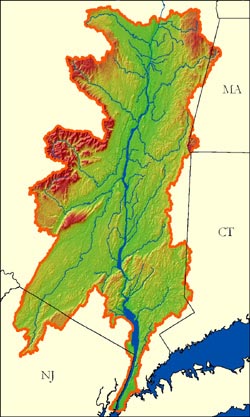Datasets

Tables of N and P contents of foodstuffs and livestock feed
When using nutrient accounting methodologies to estimate nutrient balances to watersheds, nations and other regions, it is necessary to estimate the nutrient contents of food and feed commodities, either using commodity trade statistics or making assumptions about the balance between local nutrient food & feed supply and demand. Here, we have assembled several datasets from various American, European, and Asian sources to aid the researcher in estimating nutrient fluxes associated with fluxes of food and livestock feed within a region.
These data are no longer being updated. You can view the final archived version via the link below.
Click here to access the data.
The Hudson River Estuary

 The Howarth/ Marino lab has studied the Hudson basin, sub-basins, and estuary extensively since 1987. Our current research continues to develop our understanding of watershed inputs
of nutrients (atmospheric deposition, agricultural, and food-related inputs) as well as watershed-scale processes and their effects on riverine fluxes of water, sediment and nutrients
(nitrogen, phosphorus, silica). We also continue to evaluate changes in the ecosystem metabolism and water quality of the Hudson Estuary using long-term datasets, most recently in
collaboration with colleagues at the NYC Dept of Environmental Protection (NYCDEP). We aim to improve the scientific understanding of human impacts on these processes, including the
effects of climate variability and land-use changes.
The Howarth/ Marino lab has studied the Hudson basin, sub-basins, and estuary extensively since 1987. Our current research continues to develop our understanding of watershed inputs
of nutrients (atmospheric deposition, agricultural, and food-related inputs) as well as watershed-scale processes and their effects on riverine fluxes of water, sediment and nutrients
(nitrogen, phosphorus, silica). We also continue to evaluate changes in the ecosystem metabolism and water quality of the Hudson Estuary using long-term datasets, most recently in
collaboration with colleagues at the NYC Dept of Environmental Protection (NYCDEP). We aim to improve the scientific understanding of human impacts on these processes, including the
effects of climate variability and land-use changes.
Datasets generated in this work are availiable for download on the "Downloads" tab on the following page:
Link to Hudson Data Page
Scope International Biofuels Project
The fundamental goal of the Project was to compile and synthesize the best available science-based objective information to address the question "what are the characteristics of an environmentally desirable and sustainable biofuel?" The Project held a planning meeting in Miami, Florida in 2007, held an international workshop in Gummersbach, Germany in 2008, and published a consensus report in 2009. Output from the Project also informed the 2009 report from UNEP on biofuels.
The website summarizing the project with links to the reports and presentations has been archived, and is available at the link below.
Link to archived site
Tools and Models
Watershed Toolboxes and Models
Our group has developed two tools for modeling at the scale of large watersheds and regions, using both statistically based models (NANI) and mechanistically based models (ReNuMa). You can read more about our group's modeling work and view a list of related publications here, or visit the links below to read about NANI and ReNuMa.